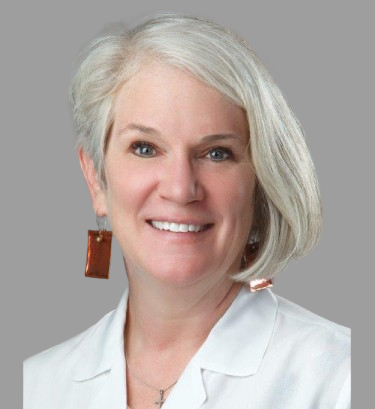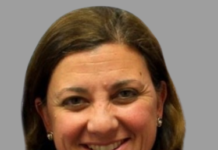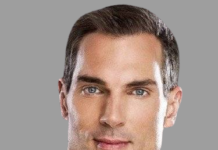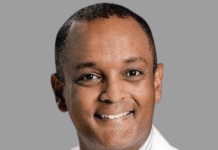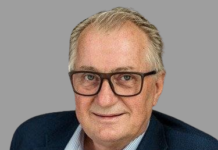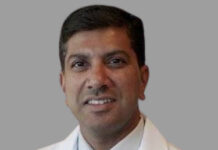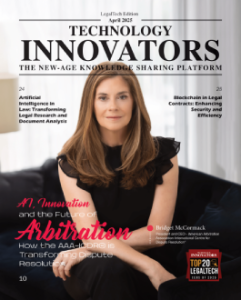Dr. Maria Kunstadter, Co-Founder & President , The TeleDentists
Dr. Kunstadter graduated from U.M.K.C Dental School. While there, she co-founded the U.M.K.C Dental Outreach Program. The program has taken students, facility and alumni to third world countries to provide dental care for 25 years. Dr. Kunstadter has led and participated in over 24 medical mission trips worldwide since 1982.
Dr. Kunstadter has been in private practice of dentistry for over 35 years. In 2001, she co-founded The Smile Salon, the Midwest’s first Dental Spa. In 2004, she was designated an “Innovator “ by the Invisalign Corporation. In 2008, she achieved the designation of Elite Preferred Provider with Invisalign, which is awarded to only 1% of Invisalign providers in the world. Dr. Kunstadter was the first woman dentist to be awarded this honor. She is an international speaker with Invisalign and continued to receive Elite Status during her tenure at the Smile Salon.
In 2013, Dr. Kunstadter was appointed the Dental Director of The PAINS Alliance of Kansas City, an organization developed to address chronic pain nationwide. She is the co-founder of The TeleDentists, the first Teledental platform to provide dental consultation services to the healthcare industry. Dr. Kunstadter spends countless hours advocating for dental/medical integration as a solution for improving healthcare. She is President of The TeleDentists, on the board of the American Teledental Association, a member of the Alphas and spends her spare time enjoying her 2 year old granddaughter.
The Perfect Storm for Teledentistry
A perfect storm is defined as an unusual combination of events or things that produce unusually powerful results. The perfect storm for teledentistry is the combination of technology, pandemic, and market demand. The future of dentistry is here and now.
To reduce the adoption barrier, it is important to remember is teledentistry is nothing new. We have been doing teledentistry since the first telephone was invented in 1849—not by Alexander Graham Bell, but by an Italian.
As soon as two people could talk to each other on the telephone, and one complained about a toothache, that was teledentistry-using telecommunications in the care, treatment, and education of dentistry. Healthcare providers have been providing telephone consultations ever since. Now, adding a video component to that conversation allows the doctor to see the patient and visually assess the patient. And, telemedicine has been available since 2002, providing medical care virtually. Telemedicine can truly be called telehealth when oral health is integrated into the system since dentistry is another specialty of medicine and oral health has a huge impact on total health. Comprehensive patient care virtually now includes physicians, behavioral health specialists, dermatologists, optometrist, dentists, and the list continue to grow.
It is important to define what teledentistry is and is not. Teledentistry can include patient care and education delivery using, but not limited to, the following modalities:
- Live video (synchronous): Live, two-way interaction between a person and a provider using audiovisual telecommunications technology.
- Store-and-forward (asynchronous): Transmission of recorded health information (for example, radiographs, photographs, video, digital impressions and through a secure electronic communications system to a practitioner, who uses the information to evaluate a patient’s condition or render a service outside of a real-time or live interaction.
- Mobile health (mHealth): Health care and public health practice and education supported by mobile communication devices such as cell phones, tablet computers, and personal digital assistants (PDA).
- Email, text, and telephone communication with a patient.
- Webinars, virtual education sites, and podcasts are tele-dental education.
- Teledentistry is not drilling and filling but providing services that can be done with virtual care.
Teledentistry can reach more patients in less time, virtually. Before COVID, the teledentistry model that most dentists were familiar with was being utilized in states that permitted dental hygienists to work without direct supervision. A dentist could send a dental hygienist out to an off-site setting and the hygienist would send X-rays and photos via teledentistry back to the dentist for diagnosis and treatment planning asynchronously. That was started by the University of the Pacific in 2010 and was developed in the few states that allowed hygienists to work without direct supervision. That model is still being used in states that have allowed independent hygiene practicing.
Before COVID, a survey by DentVox in 2019 showed that 78% of patients are likely to start using teledentistry in the next 5 years. During that survey, patients expressed the difficulty of finding a teledentistry site as the main reason they were not able to have a dental visit. During COVID, payors stepped up and started reimbursing teledentistry, several provided teledentistry for their members at no cost to the member. States expanded their teledentistry regulations, allowing dentists to provide teledentistry to their patients and federal guidelines relaxed HIPAA regulations so many dentists utilized Facetime, Zoom, and Facebook to have virtual consultations with their patients. Now teledentistry is a household word. There are many teledentistry providers, now and the industry is growing.
Where can teledentistry be done? Anywhere there is a mobile device, computer, or laptop, a virtual dental consultation can take place on a HIPAA Secured platform. Teledentistry can improve access to an oral health specialist anywhere people go to receive healthcare: telehealth companies, long term care facilities, FQHC, hospitals, walk-in retail clinics, urgent care facilities, student health centers, and the list goes on.
What can be done with a virtual dental visit? Dental cleanings can wait, but many oral health issues cannot. Through virtual consultation, a dentist can deal with pain, lost filling/broken tooth, the temporary crown came off, oral ulcer, thrush, fever blister, eruption questions for children, malocclusion questions, gingival recess, growths, swellings, decay, decalcification and more. Triaging for optimum treatment is vital now with COVID.
Since COVID, virtual visits are now part of reducing viral exposures in the dental office. Virtual visits can provide pre-COVID screening, triaging emergencies, and palliating non-emergencies to save valuable chair time and PPEs. With all the PPE requirements to treat patients, virtual visits will be the most personal contact patients will have with their dental team. The opportunity to “see” the dentist and staff free from masks, shields, and protective gear will allow the interpersonal relationship to be established. The treatment of patients who receive services via teledentistry must be properly documented and should include providing the patient with a summary of services. Dentists who deliver services using teledentistry must establish protocols for appropriate referrals when necessary. Even though HIPAA compliance was relaxed during the start of COVID, providing privacy is important, and using a HIPAA compliant consultation will be required again. And, there must be a place to sign that the patient agrees to a telehealth consultation as well.
Estimated that 180M people will not visit a dentist’s office, but with teledentistry—they can have access to an oral health care professional at the tip of their fingers. Teledentistry allows the dental profession to reach more patients in less time, virtually. A dentist can provide a virtual consultation, prescribe an e-script (for antibiotic and/or non-narcotic pain medication), and even book a follow-on care appointment for the patient. Virtual Technology empowers patients to take control of their dental health by overcoming their biggest issue. Going to the dentist’s! A virtual consultation by a licensed dentist is a logical first step for re-introducing patients to the importance of good dental health by having a quality, professional dental consultation all from the comfort and convenience of their desktop or mobile device. If a follow-up visit is needed, the patient can be appointed to a dental office via some platforms. Telehealth is the fastest-growing setting for alternative care. Better than urgent care clinics, retail centers, and ambulatory surgical centers. Now’s a perfect time to integrate teledentistry in wellness as well as urgent care. Improve patient outcomes and reduce healthcare costs by improving oral health. TELEHEALTH USE IS UP 53% and growing faster than any other place of care. Teledentistry is the newest specialty. Expanding the reach of telehealth into oral healthcare is a big advantage to patients producing a powerful result—optimizing health.


